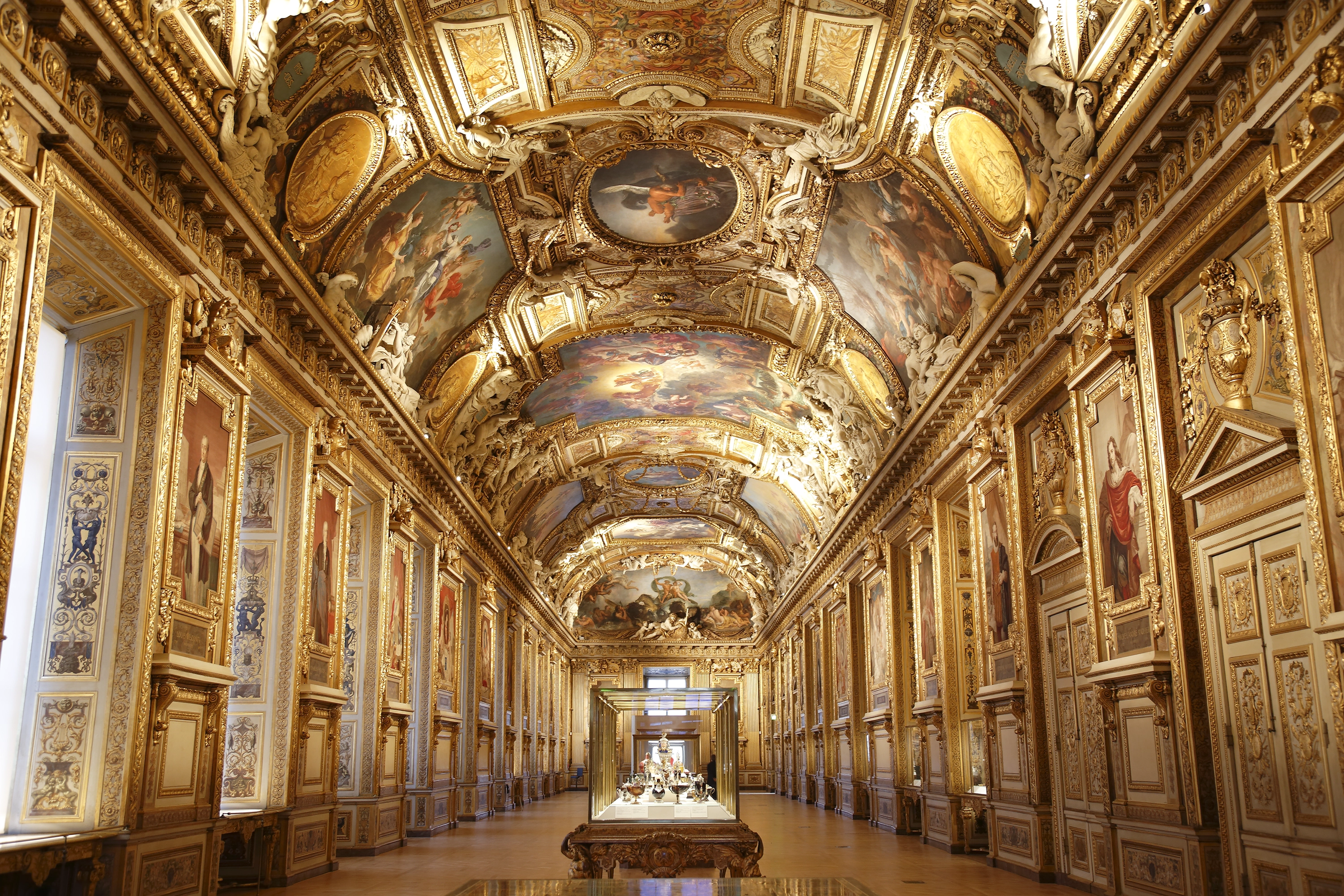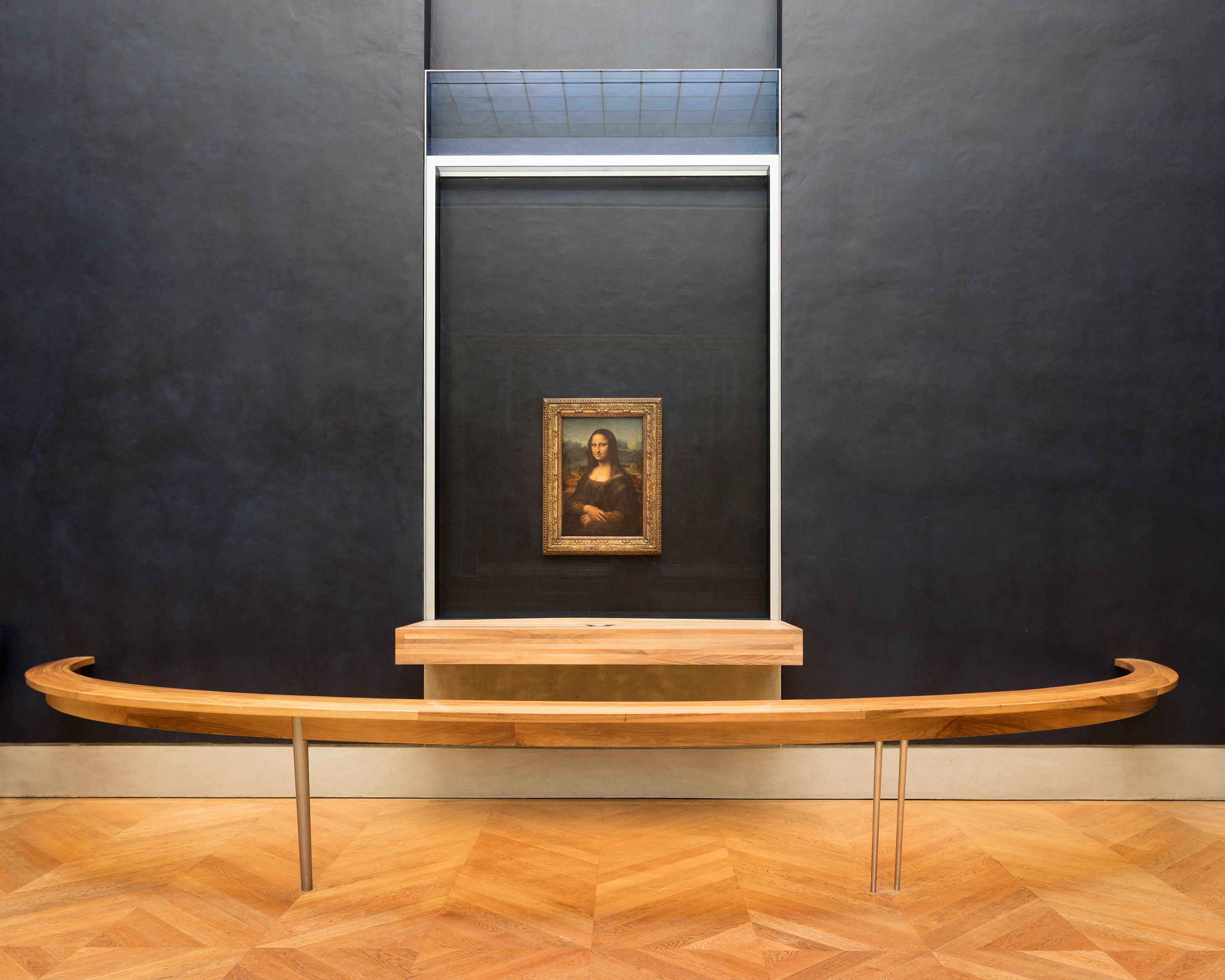A stairway to VictoryThe Daru staircase
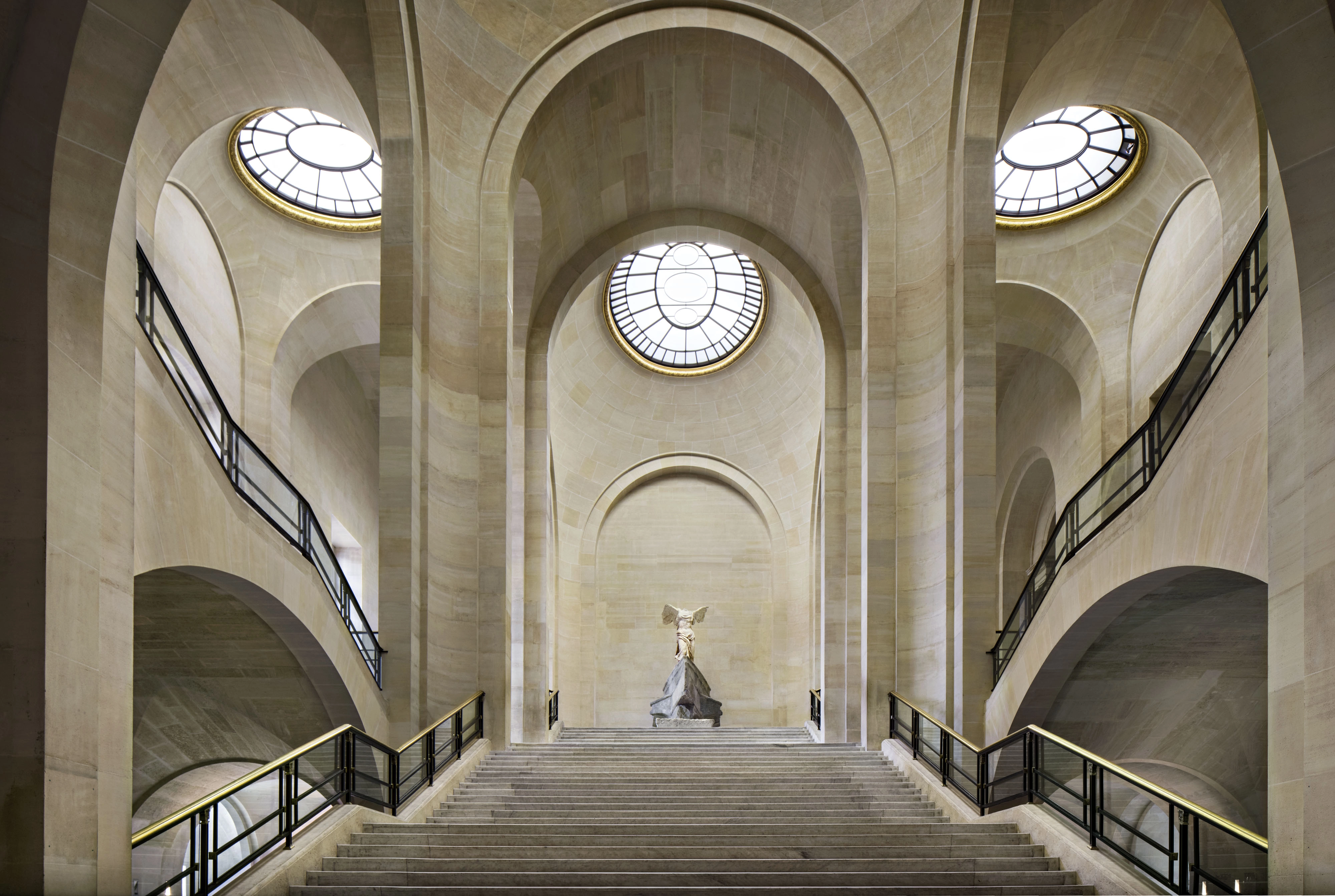
The Winged Victory of Samothrace, one of the most famous statues at the Louvre, graces the top of the monumental Daru staircase. This spectacular setting was carefully chosen to showcase the masterpiece of Greek Hellenistic art. Ancient sculpture meets modern architecture in one of the most emblematic spots of the museum.
The goddess of Victory
She seems to float through the air! The Winged Victory of Samothrace is one of the rare Greek statues whose exact original location is known. It was made as an offering to the gods for a sanctuary on the Greek island of Samothrace. Placed at a height, people could see her from afar. That is why, in a nod to her original lofty home, she now adorns the top of the Daru staircase. Nike, the winged goddess who heralds victory, is seen just as she is about to alight on a ship.
A monumental staircase
The Daru staircase is the perfect setting for this extraordinary display. It is one of six grand staircases built during the Second Empire in the 19th century by the architect Hector Lefuel.
During the 1850s and 1860s, major works were underway to expand the Louvre and make it more modern. The former palace had already been partially transformed into a museum. The emperor Napoleon III had a new wing built to make more room to showcase more art. The old staircase built by his uncle Napoleon I was no longer adequate to access all the galleries. The only things left from that time are the ceilings leading to the Italian painting collections and the name Daru, a minister under Napoleon I.
Hector Lefuel took up the challenge to design a new monumental space on three levels leading in four different directions. Visitors could choose themselves which way to go!
The Winged Victory of Samothrace was placed in her new home on the upper landing in 1883, some 20 years after the statue was discovered.
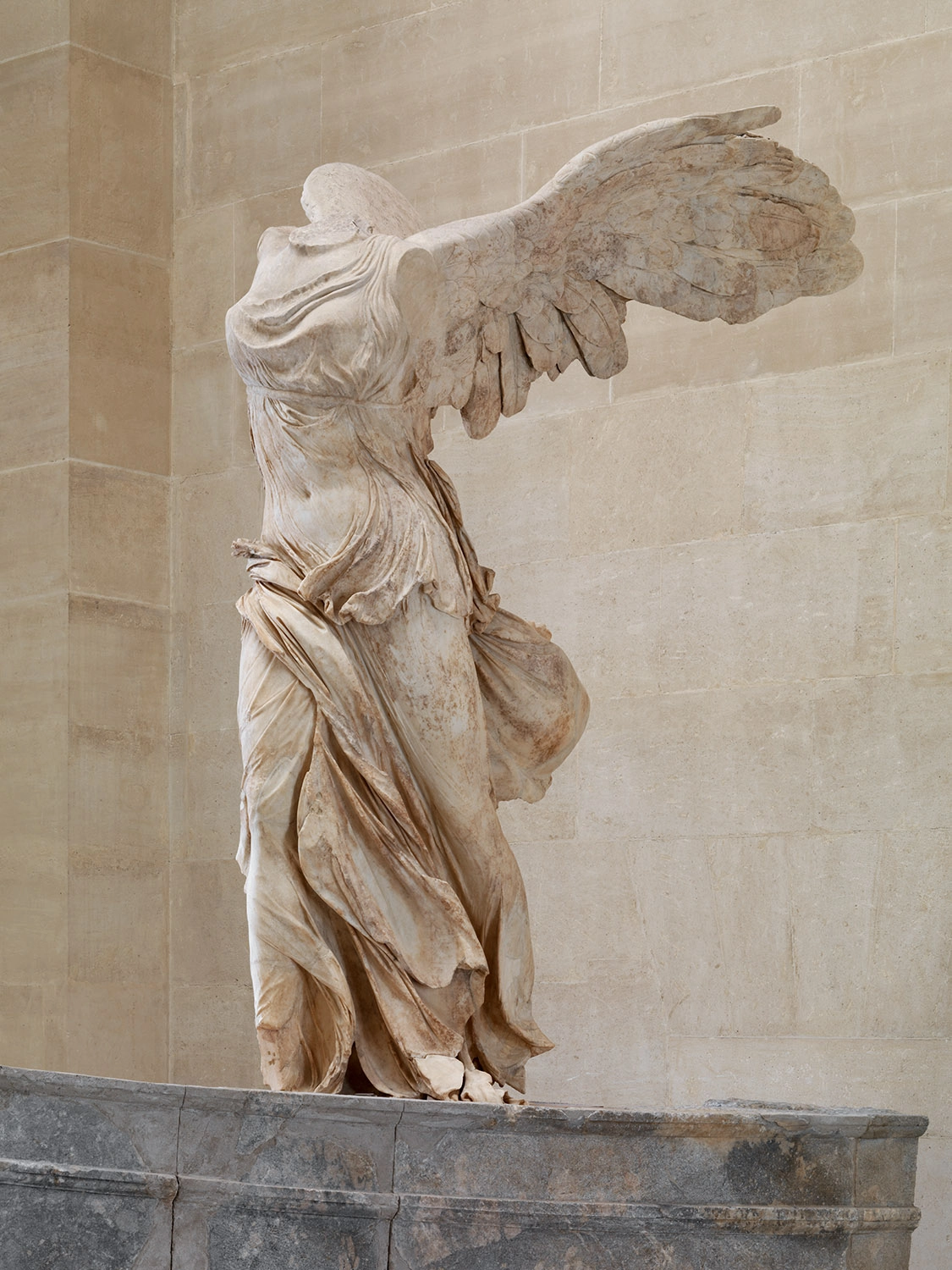
Did you know?
A ‘music-hall star’
When Victory was brought to her new home on the upper landing of the Daru staircase in 1883, a much busier décor than what you see today was designed especially for her. The domes above were decked out in heavily gilded mosaics. But this setting was not to everyone’s taste…Some critics compared the winged goddess to a ‘music-hall star’. Finally, in 1934, this initial décor was covered up with more sober wallpaper imitating cut stone.
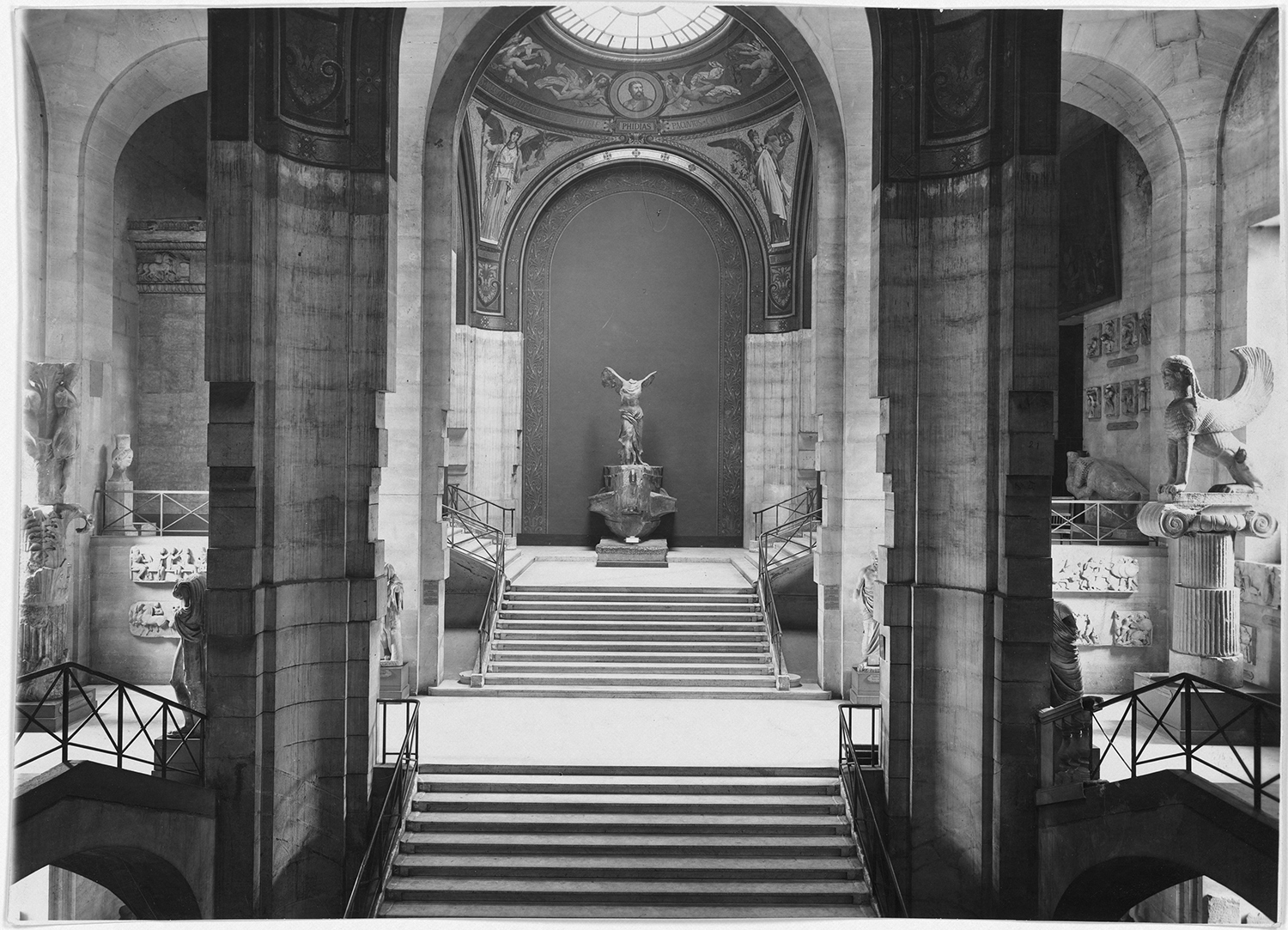
An exceptional discovery
The famous statue of Victory bears the name of the Greek island of Samothrace – located in the Aegean Sea – where she was discovered in 1863 by Charles Champoiseau. What a find! The statue is breathtaking, but broken and incomplete. Some 110 fragments were unearthed, but there was no sign of her head or her arms. Charles Champoiseau went back to Samothrace in 1879 to look for them, but in vain. This second dig yielded the plinth and the prow of the ship that served as a base for the statue. The wings, only partially retrieved, were restored with plaster to fill in the blanks so that Victory could get back her original looks. The statue has been restored several times and has been changing form ever since she was found!
An offering to the gods
The statue, made of marble from Paros (one of the finest marbles of Greece), represents the goddess of Victory about to alight on a ship whose sailors have just won a sea battle. It probably dates to 190 BC and was commissioned to celebrate that victory. The winners, perhaps the inhabitants of the island of Rhodes, erected it in Samothrace to thank the Great Gods of the island, the Cabeiri, who were worshipped throughout the Greek world.
Did you know?
Lost arms, but hand (partially) found
Since Champoiseau’s excavations, many archaeologists have tried to find the head and arms of Winged Victory. After several digs, only the right hand turned up: first the thumb and part of the ring finger by an Austrian team in 1875, then the palm and the remainder of the ring finger by the archaeologist Jean Charbonneaux in 1950. These remains are in a small showcase on the landing. The 27-cm hand turns its palm upward, in a sign of victory.
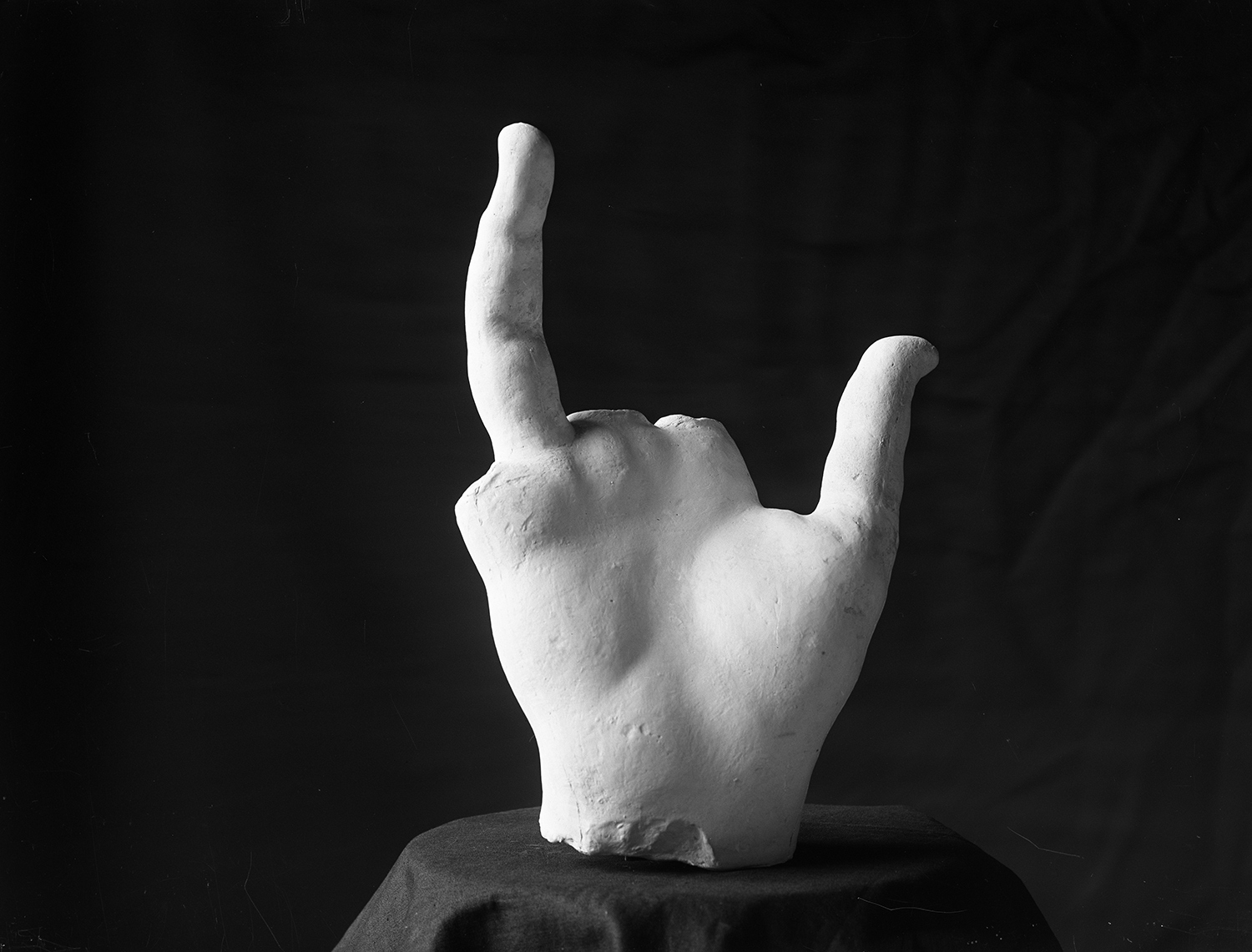
If you want to learn more
From her discovery to the various restorations she’s been through, the Winged Victory has plenty of stories to tell!
More to explore
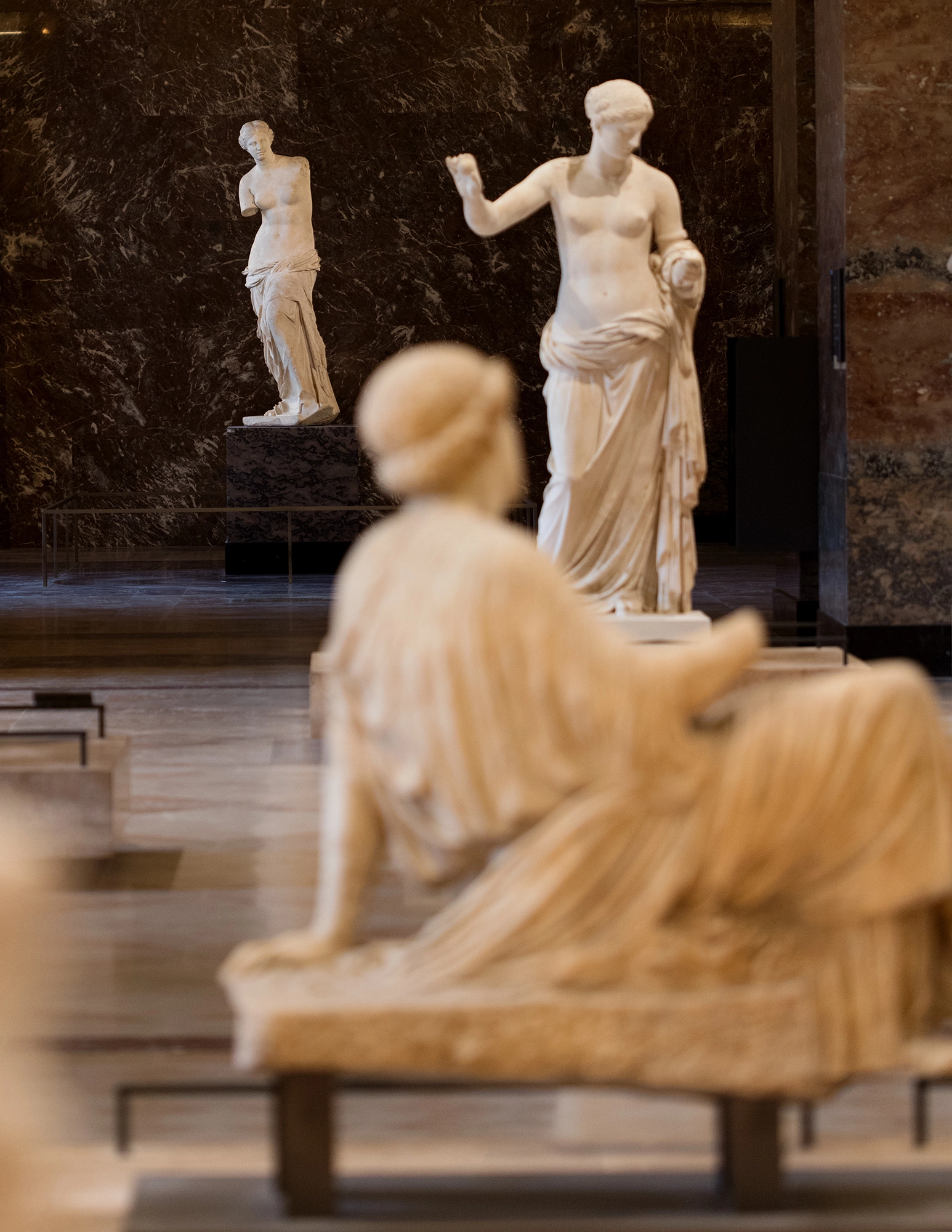
Ideal Greek Beauty
Venus de Milo and the Galerie des Antiques
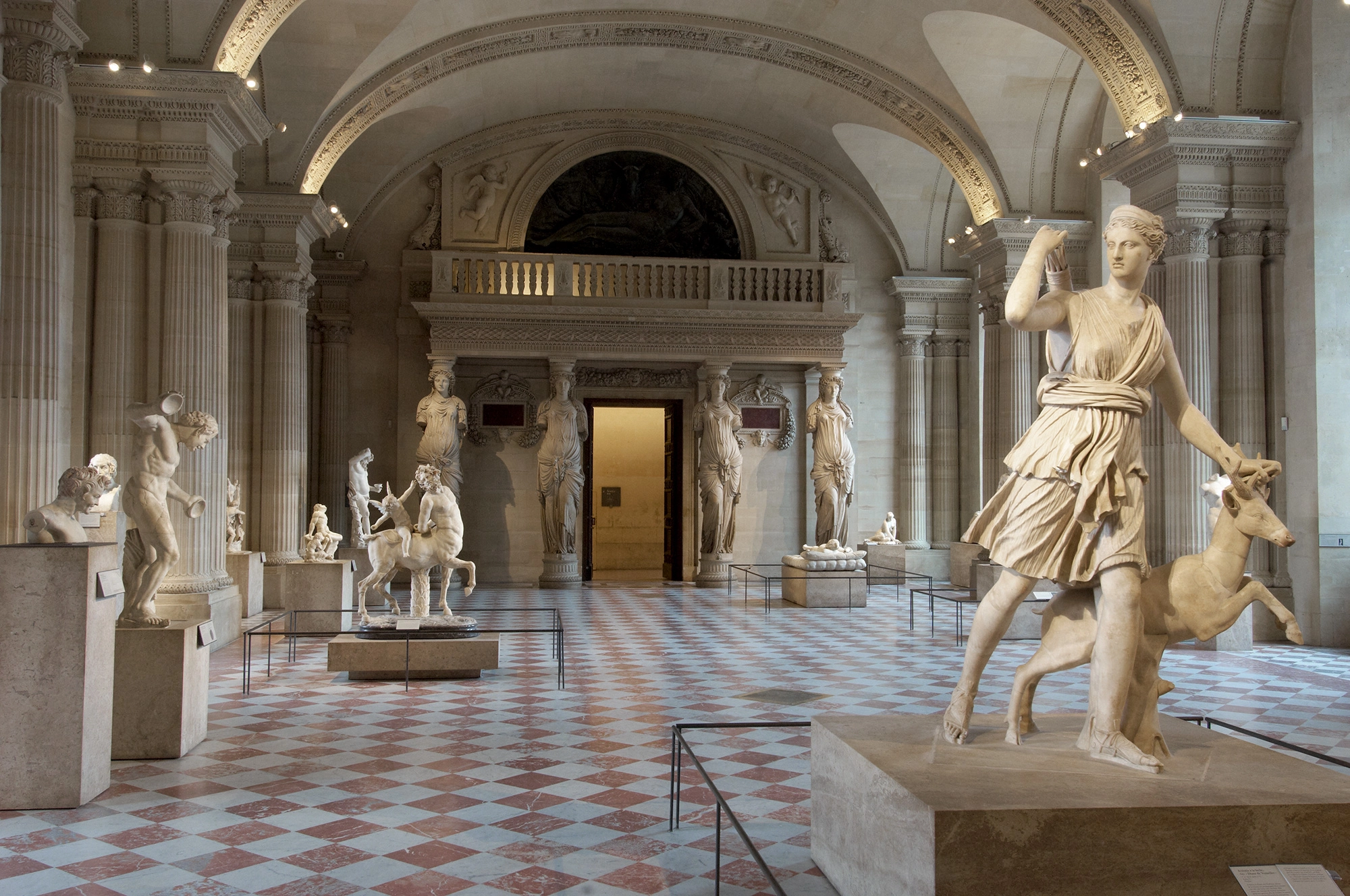
At the Heart of the Renaissance Palace
The Salle des Caryatides

